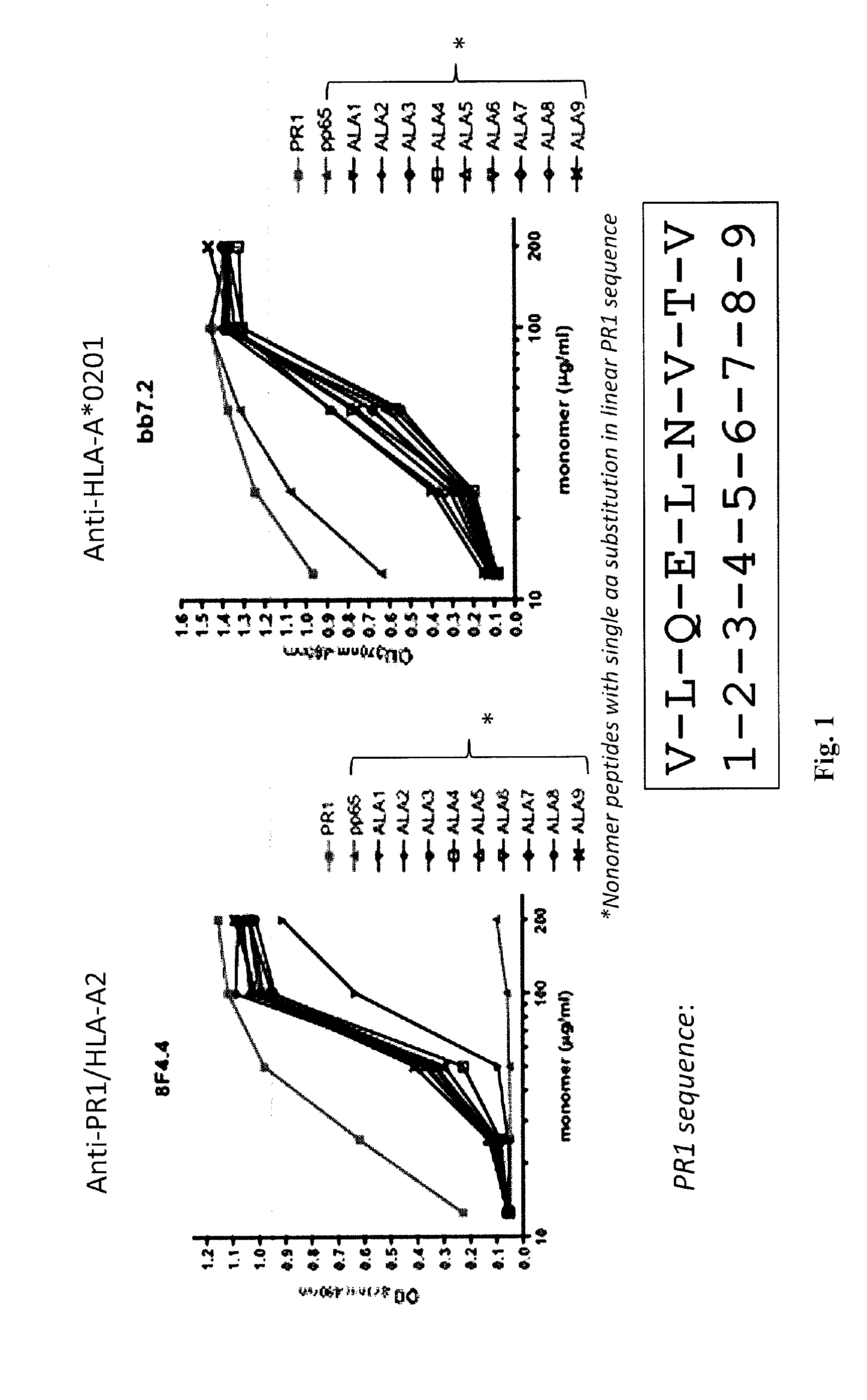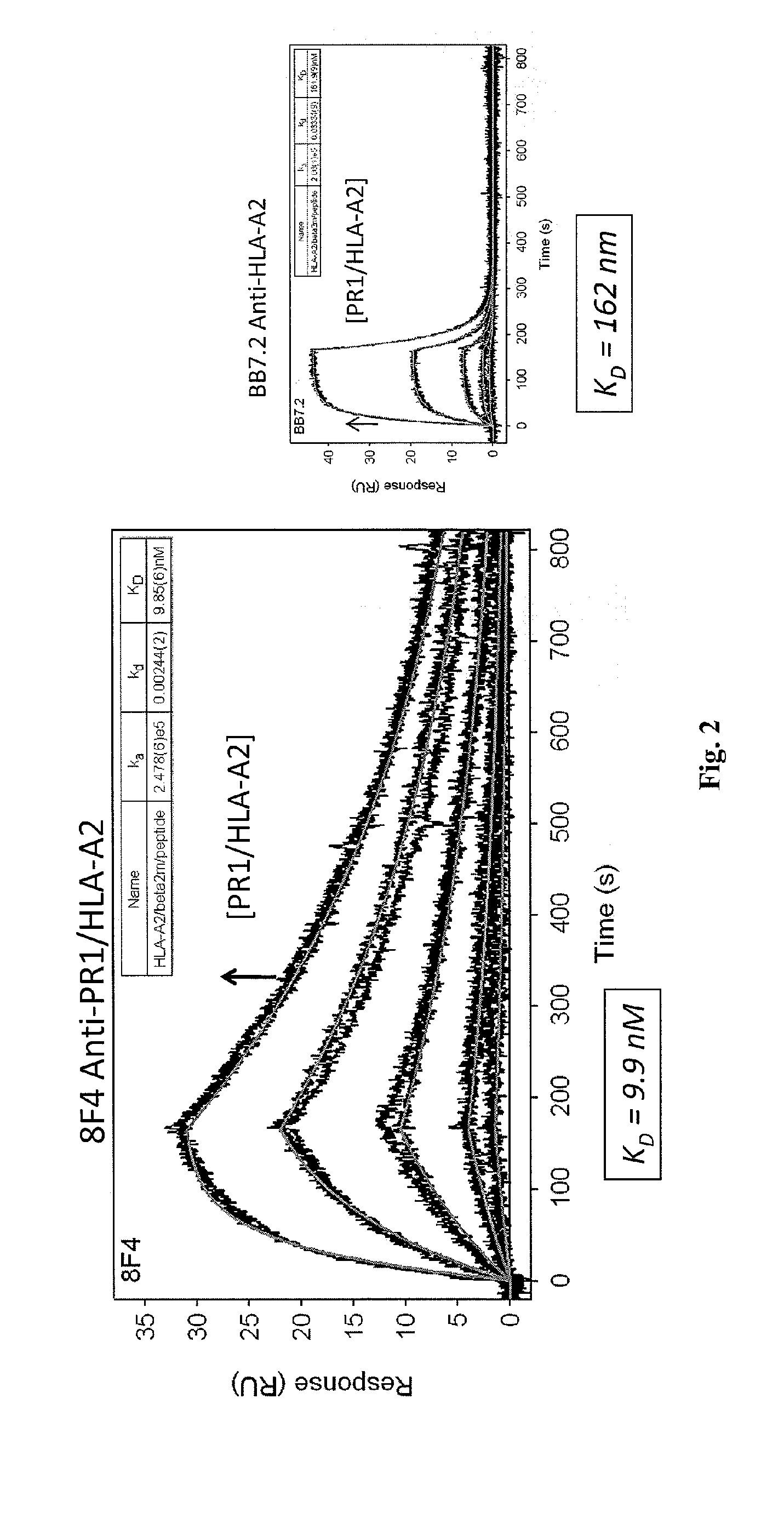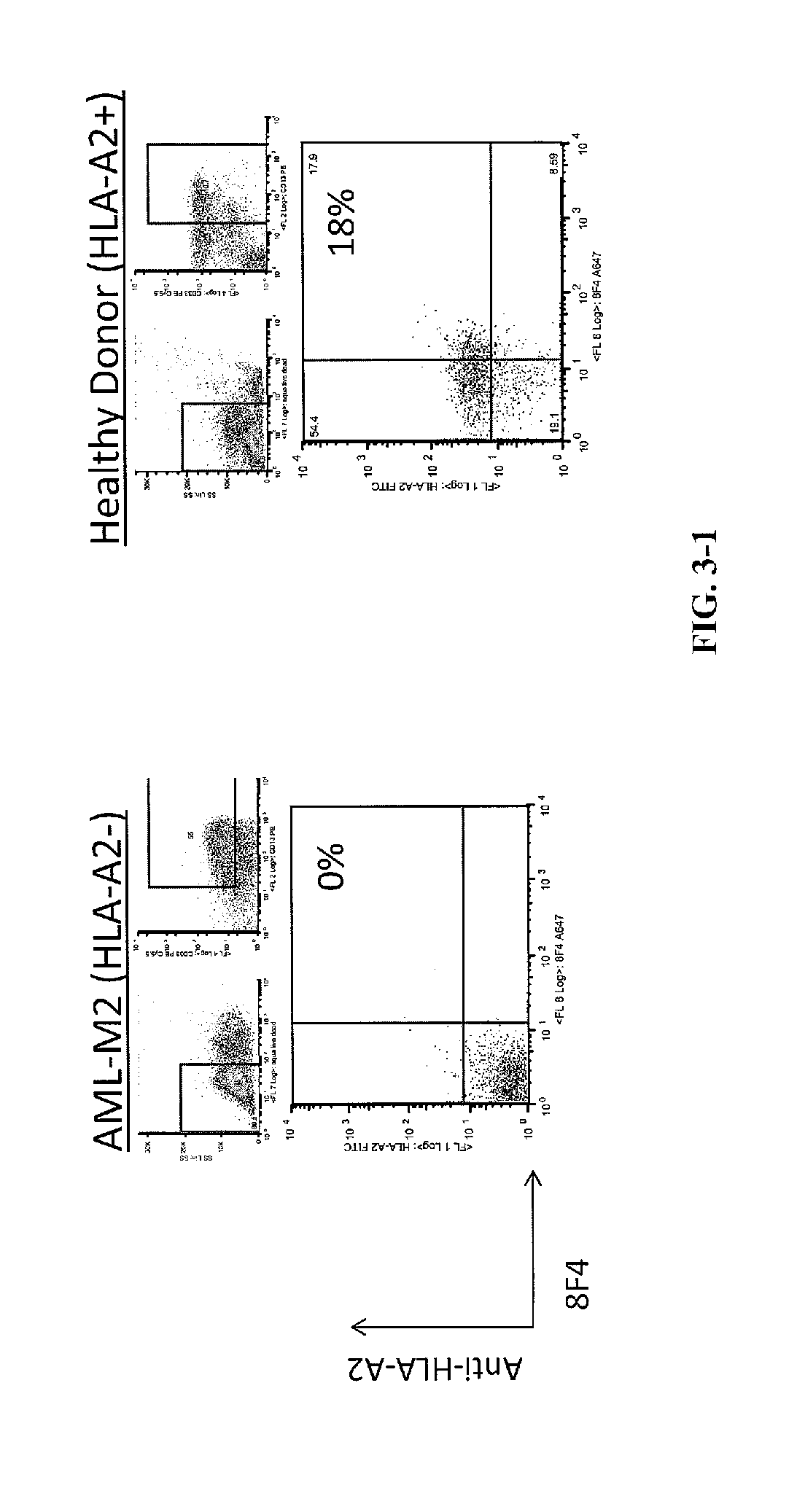Monoclonal Antibodies For Use In Diagnosis and Therapy of Cancers and Autoimmune Disease
a cancer and autoimmune disease technology, applied in the field of cancer and immunotherapy, can solve the problems of gvhd, dli for aml generally not as durable, and lack of evidence for specific and efficacious immune responses in human cancer
- Summary
- Abstract
- Description
- Claims
- Application Information
AI Technical Summary
Benefits of technology
Problems solved by technology
Method used
Image
Examples
example 1
Methods
[0211]Antibody production. To obtain an antibody against the combined PR1 / HLA-A*0201 epitope, the inventors immunized BALB / c mice with recombinant PR1 / HLA-A*0201 monomers via subcutaneous (SQ) and intraperitoneal (IP) routes, three times spaced two weeks apart. Splenocytes were isolated from the immunized animal and B cells were fused with HGPRT negative, immortalized myeloma cells using polyethylene glycol (PEG). Hybridoma cells were then selected with pp65 / HLA-A*0201 and PR1 / HLA-A*0201 monomers and placed into 96-well plates for single cell cloning.
[0212]Antibody Screening and Characterization. Monoclonal cell lines (˜20,000) were screened with PR1 / HLA-A*0201 monomers by ELISA to identify a positive antibody-secreting hybridoma. The 8F4 hybridoma was identified by ELISA with specificity for PR1 / HLA-A*0201 and was characterized using isotype-specific antibodies and immunoglobulin light chain antibodies.
[0213]Antibody Cloning, Sequence Analysis and Binding Studies. 8F4 heavy ...
example 2
Results
[0218]Antibody production. To obtain an antibody against the combined PR1 / HLA-A*0201 epitope, the inventors immunized BALB / c mice with recombinant PR1 / HLA-A*0201 monomers via subcutaneous (SQ) and intraperitoneal (IP) routes, three times spaced two weeks apart. Splenocytes were isolated from the immunized animal and B cells were fused with HGPRT negative, immortalized myeloma cells using polyethylene glycol (PEG). Hybridoma cells were then selected with pp65 / HLA-A*0201 and PR1 / HLA-A*0201 monomers and placed into 96-well plates for single cell cloning.
[0219]Antibody Screening and Characterization. Monoclonal cell lines were screened with PR1 / HLA-A*0201 monomers by ELISA to identify a positive antibody-secreting hybridoma. Nearly 2,000 hybridomas were screened and one, dubbed 8F4, was identified by ELISA with specificity for PR1 / HLA-A*0201. The 8F4 hybridoma was characterized using isotype-specific antibodies and immunoglobulin light chain antibodies and shown to secrete a sing...
PUM
| Property | Measurement | Unit |
|---|---|---|
| pH | aaaaa | aaaaa |
| volume | aaaaa | aaaaa |
| volume | aaaaa | aaaaa |
Abstract
Description
Claims
Application Information
 Login to View More
Login to View More - R&D
- Intellectual Property
- Life Sciences
- Materials
- Tech Scout
- Unparalleled Data Quality
- Higher Quality Content
- 60% Fewer Hallucinations
Browse by: Latest US Patents, China's latest patents, Technical Efficacy Thesaurus, Application Domain, Technology Topic, Popular Technical Reports.
© 2025 PatSnap. All rights reserved.Legal|Privacy policy|Modern Slavery Act Transparency Statement|Sitemap|About US| Contact US: help@patsnap.com



